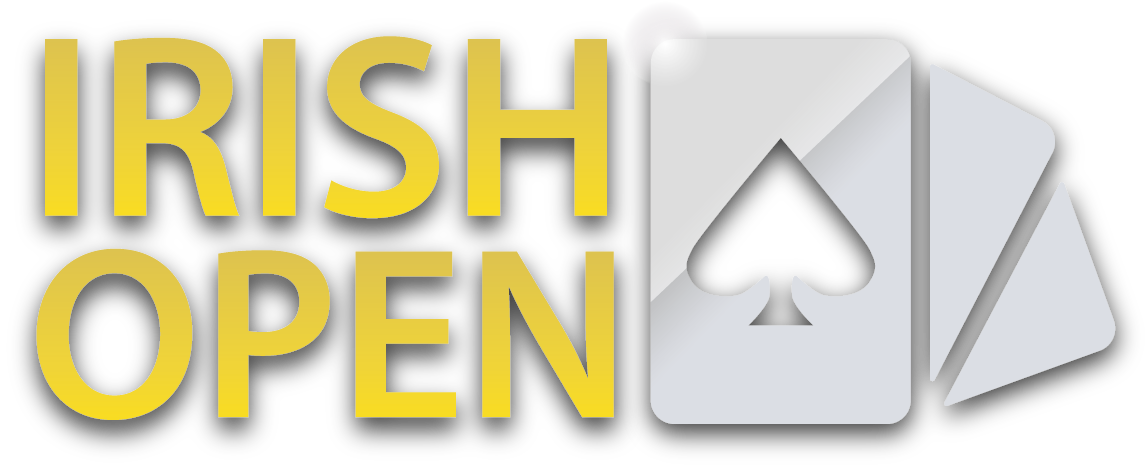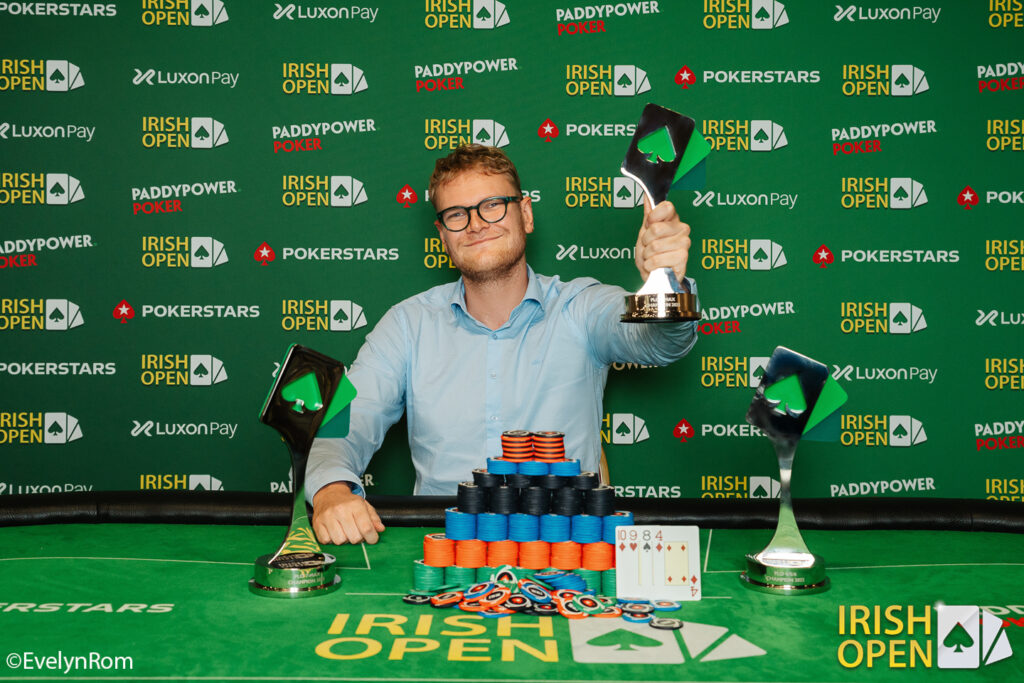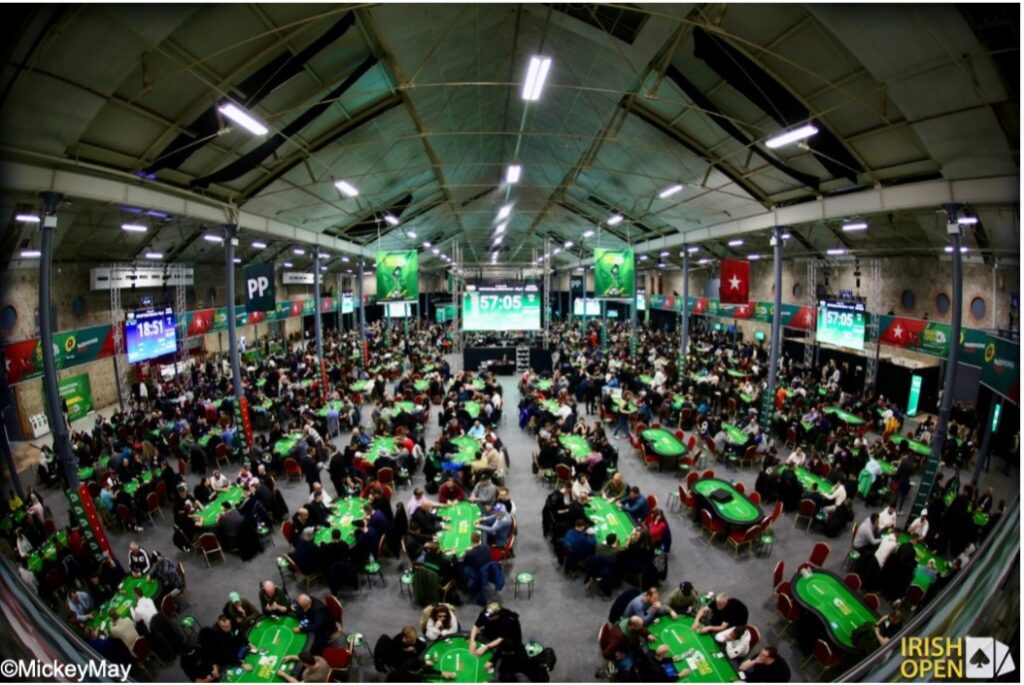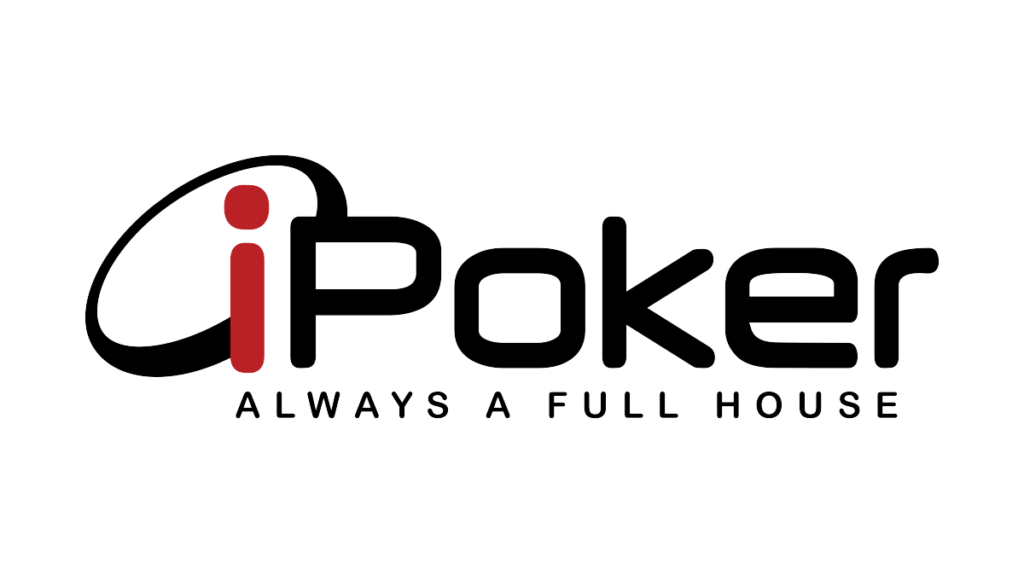About the

The story is peppered with colourful characters and laced with triumph and tragedy.
It all started in May 1979, when a colourful Irish bookmaker found himself with three days to kill in Las Vegas.
The Irish Open’s illustrious history
The origins of the Irish Poker Open date back to the mid-1970s when maverick Irish bookmaker Terry Rogers started hosting poker tournaments in Dublin. But it was Rogers’ visits to Las Vegas – where he forged a close friendship with World Series of Poker founder Benny Binion – that changed the face of poker in Europe. Stud and draw were the poker variants of choice across Europe but Rogers realised that Texas no limit hold’em – the new game he’d played in Vegas – beat them all for excitement and skill. Inspired by the energy of the World Series, Rogers was determined to bring the new variant to a whole new audience.
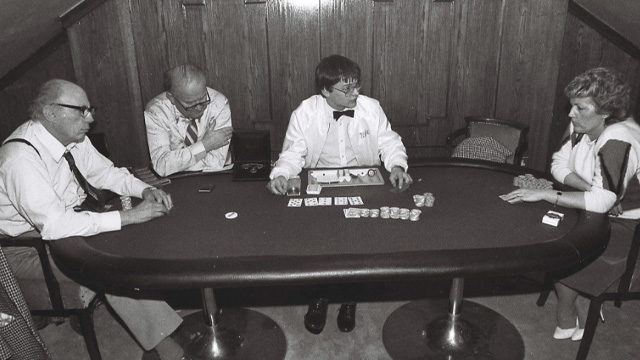
Rogers’s long-time collaborator Liam Flood, who took over the running the Irish Open after Rogers passed away, described the event’s beginnings:“Terry and I were on-track bookmakers. We were competitors but we started to hold poker tournaments for charity. We’d get anywhere between 100 and 300 players playing 5-card draw for £100 to £200 per game. That was a lot of people for that kind of money at the time. Every year Terry would go to America on business. In May 1979, he had a few days off and went to Vegas. He saw this high stakes poker game going on and met Benny Binion and the rest is history.”
Always one to spot an opportunity, Rogers cemented his relationship with Binion and his cohort of high-rollers by taking bets from them – and offering the type of long odds the Americans had never seen before. “Guys like Benny Binion, Doyle Brunson, and Chip Reese really held Terry in high esteem,” said World Series bracelet winner Donnacha O’Dea. “He’d give them great odds, better than any American bookie would give, but he still made sure he had an edge.”
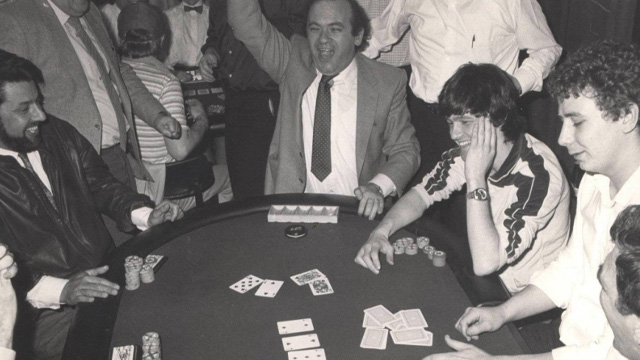
After the 1979 World Series, Rogers returned to Ireland enthusing about what he’d seen. The tournaments Terry had been running in Dublin since the mid-1970s morphed into the Irish Open in 1980. Two years later, Rogers lured a colourful array of international poker celebrities including Doyle Brunson, Chip Reese, and Amarillo Slim to compete at the event. The Americans – ever grateful for Rogers’ generous bookmaking services back home – were happy to make a rare excursion from their home soil to compete in the Emerald Isle.
O’Dea remembered the American invasions with glee. “One year Terry got them a yellow Rolls Royce for when they arrived at the airport. Another year he arrived with a white horse which Amarillo Slim, who was a real horseman, rode out of the airport. Those years he had Tom McEvoy, Jack Keller, Stu Ungar, Doyle Brunson, Chip Reese, and Perry Green from Alaska. It was funny to see them try to pay for goods in a village shop with poker chips, something they were used to doing in Vegas.”
The Americans’ attendance drew a lot of media attention and helped turn the fledgling tournament into a truly global event. Rogers’ scrupulous approach to poker integrity also appealed to players. O’Dea added: “Terry took his poker tournaments really seriously and ran them very well. He was quite paranoid about cheating and always insisted the dealers cut the deck in a special way. He’d declare a hand illegal if he saw someone cut the deck in any other way.”
Around 1990, Rogers took time off to care for his mother and the event fell into abeyance. However by the mid-1990s, no-limit hold’em was gaining popularity around Europe and Flood suggested resurrecting the festival. After Rogers passed away in 1999, Flood – by then a two-time Main Event champion – took over the event fulltime.
Under Flood’s leadership, numbers dramatically increased and the Irish Open swiftly earned a reputation as one of the best-organized and most player-centric tournaments in the world.
A New Era: O’Reilly and McCann
In 2016, after the passing of Liam Flood, Paul O’Reilly and JP McCann – who had both worked at the Irish Open for many years – took over the reins. Their vision was to create not only an affordable and competitive poker event but also a vibrant festival that would appeal to players from all over the world. To that end, they reduced the Main Event buy-in to €1,150 and slapped on a prize pool guarantee of €500k – a huge sum at the time. It was an inspired move. In their first year, the Main Event expanded from 320 players to nearly 800 and the guarantee was well and truly smashed with over €800k in the prize pool.
Under O’Reilly and McCann’s leadership, the festival has enjoyed enormous growth while continuing to offer a truly fun element away from the tables. During the pandemic in 2020 and 2021, the event was held online and, yet again, smashed all previous records. In 2022, Irish-American poker legend Steve O’Dwyer won the Main Event after blasting through a field of more than 2,000 entries. O’Dwyer, who lives in Dublin and is very proud of his Irish heritage, said the victory meant more to him than almost any other event he’s ever played.
In 2023, PokerStars and Paddy Power came on board – further enhancing the tournament’s reach with hundreds of online qualifiers taking part. The Main Event attracted 2,491 entries with a prize pool of €2.43 million – making it the largest poker tournament ever held in Ireland. PokerStars qualifier David Docherty took it down for a record first prize of €365,000.
In 2024, numbers increased still further with 3,233 entries and a €3,152,175 prize pool, while the €500,000 guaranteed Mini Irish Open attracted 5,320 entries to become Ireland’s largest-ever tournament.
The record-breaking 2025 Main Event was the richest poker tournament ever held in Ireland, with 4,562 entries generating a €4,447,950 prize pool – nearly €2 million more than the guarantee. The partnership with PokerStars, Paddy Power and the iPoker network enabled more than 1,300 players to win their way into the flagship tournament via online satellites. Across the 69 different tournaments on the schedule, there were over 25,000 entries (up from some 17,000 in 2024 and just 10,000 in 2023) and an astonishing €14.5 million was awarded in prize money.
Looking ahead to 2026 and beyond
O’Reilly, McCann and the dedicated Irish Open team are looking forward to hosting yet another record-breaking event next year. The festival will be taking place from March 26 to April 6, 2026 at the prestigious Royal Dublin Society.

